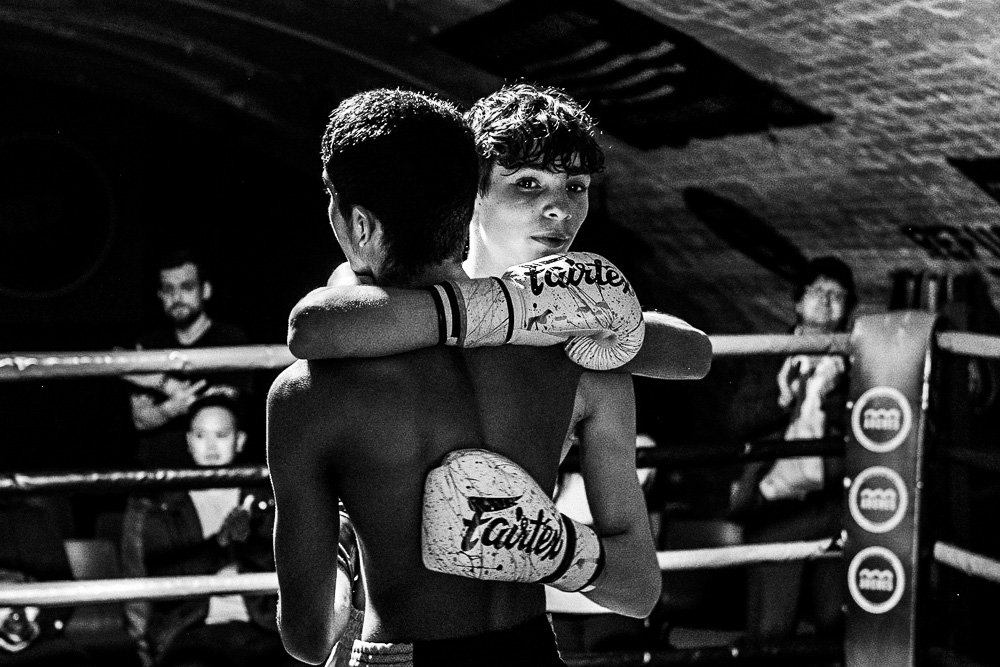
Muay Thai photography
Muay Thai is my most recent passion, as a practitioner and as a photographer.
It’s truly a joy documenting something I am personally invested in and genuinely interested in.




Muay Thai, Thailand's ancient martial art, traces its origins back centuries. Evolving from battlefield combat techniques, it became a rigorous sport. Muay Thai practitioners, or "nak muay," employ fists, elbows, knees, and shins for strikes and clinching.
Historically, bouts were held at festivals and served as both entertainment and military training. Today, Muay Thai is a global sport known for its intense conditioning and cultural significance, embodying discipline, respect, and the country's fighting spirit.
For taking these kinds of photographs, you should look at cameras for sports photography. It’s a big advantage to be able to shoot a high frame rate with fast autofocus and tracking.
Taking photographs of fighters
Taking pictures of Muay Thai fighters can be an exhilarating and challenging experience for a photographer. Muay Thai is a combat sport known for its intensity, speed, and dynamic movements, so capturing the essence of the sport requires careful preparation and quick reflexes. Here's a step-by-step guide to taking pictures of Muay Thai fighters:
Understand the Sport: Before you start taking pictures, familiarize yourself with the rules and techniques of Muay Thai. Understanding the sport's dynamics will help you anticipate the fighters' movements and capture decisive moments.
Select the Right Equipment:
Camera: Choose a camera with fast autofocus capabilities and burst mode. A camera with good low-light performance is essential since Muay Thai events often take place in indoor arenas with varying lighting conditions.
Fast Shutter Speed: Muay Thai involves rapid movements, so use a fast shutter speed (at least 1/500th of a second or faster) to freeze the action and avoid motion blur.
Aperture Settings: Set your aperture to a wide-open setting (e.g., f/2.8 or f/4) to create a shallow depth of field. This will help isolate your subjects from the background and emphasize the fighters. When you’re at boxing events or kickboxing events it might be under low light conditions. So I’d recommend investing in a nice lens that can go to an aperture of 1.5 at least
Exposure Settings: Use a higher ISO setting to compensate for low-light conditions. However, be cautious not to introduce too much noise into your images. Test your camera's limits in advance to find the best balance between ISO and image quality.
Continuous Autofocus: Enable continuous autofocus (AI Servo or AF-C) to keep the fighters in focus as they move around the ring.
Composition: Pay attention to composition. Frame your shots to capture the fighters' expressions, intensity, and interactions. Rule of thirds and leading lines can be helpful guidelines.
Timing and Anticipation: Anticipate the fighters' movements and actions. Be ready to capture moments like punches, kicks, clinches, and reactions from both the fighters and the audience.
Positioning: Position yourself strategically around the ring. Different angles can provide unique perspectives. However, be mindful of safety and the rules of the event. Stay in designated areas for photographers.
Shoot in Burst Mode: Use burst mode to capture a series of shots in quick succession. This increases your chances of getting that perfect action shot.
Respect the Fighters: Remember that you're photographing a sport where the participants are giving their all. Respect their efforts and the rules of the event. Avoid using flash, as it can distract or blind the fighters.
Capture Emotions: Look for emotional moments, both in the fighters and the audience. These candid shots can add depth to your collection.
Tell a Story: Aim to tell a story through your photos. Capture the buildup, the fight itself, and the aftermath. A series of images can convey the full narrative of a Muay Thai event.
In summary, photographing Muay Thai fighters requires a combination of technical skills, anticipation, and an understanding of the dynamics of Muay Thai. With the right equipment and techniques, you can capture the intensity and beauty of this martial art.

